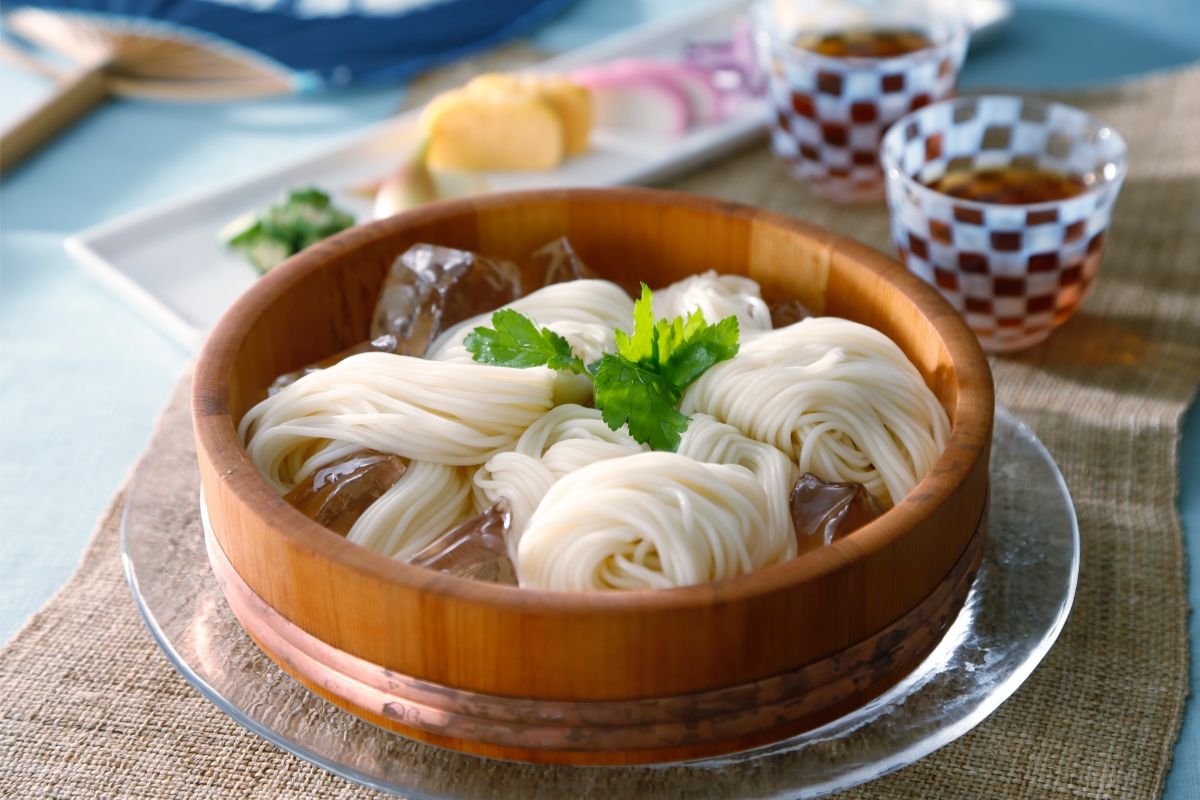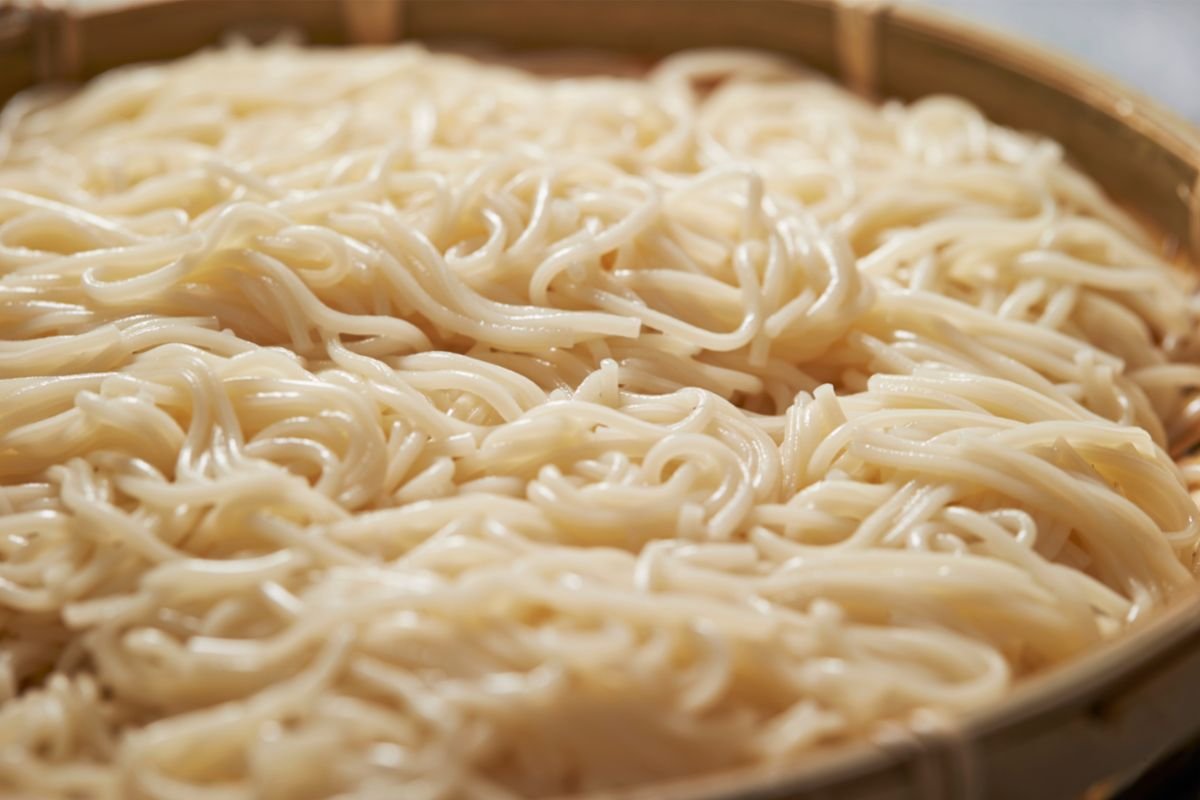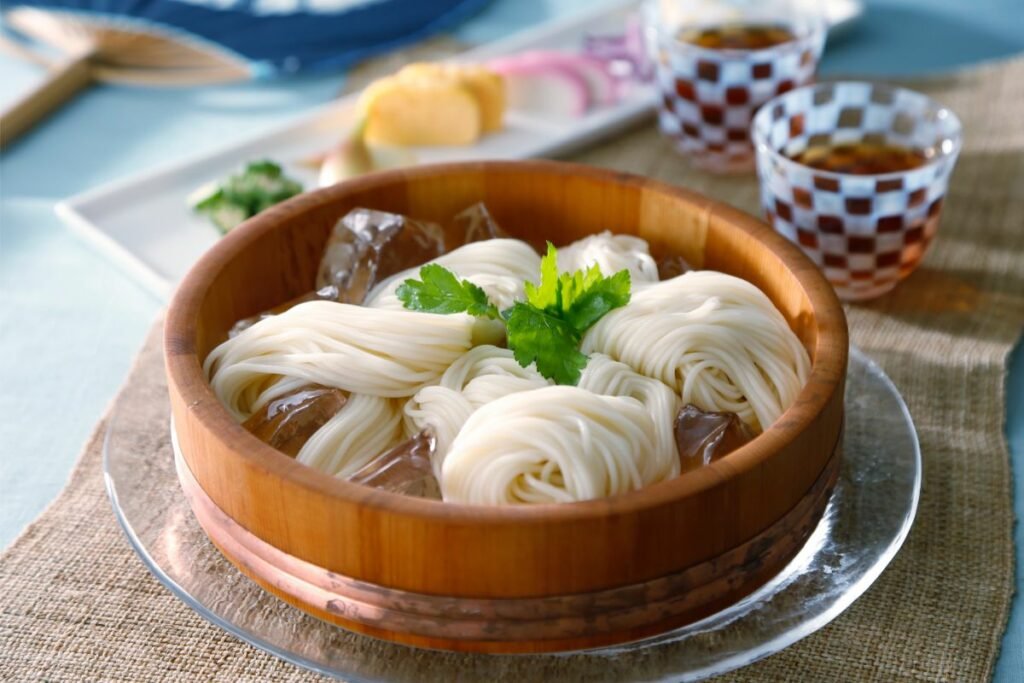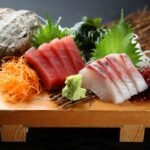Noodles are perhaps one of the most popular and iconic foods from Japan. Noodles can be served in so many distinct ways, and can even be served alongside countless different dishes.

You need look no further than one of Japan’s favorite national dishes, ramen, to see just how popular noodles are within the country.
But ramen isn’t the only popular noodle dish that you can try out in Japan. Far from it! There are countless amazing noodle dishes from Japan, so that is likely why you have found your way here right now.
Come across somen noodles at some point while looking at Japanese noodle dishes? Wondering what they actually are and what makes them distinct? Well, you definitely are not alone, so that is why, today, we are going to take a look at exactly what somen noodles are.
Dive in below now to get started!
What Are Somen Noodles?
One of the things that easily distinguishes somen noodles from, say, standard ramen noodles is that they are most often served chilled. Somen noodles are served on their own dish, often covered with a light layer of iced water.
From here, those eating the noodles simply pick up a bundle of the somen noodles, and then carefully dip them into a sauce made of soy sauce and often a combination of extra ingredients to enhance the flavor.
Some of the extra ingredients often include things such as ginger, and mirin, which is a sweet rice wine.
Oftentimes, somen noodles are also served with a number of garnishes spread across the top of them, or just to the side. Common garnishes include things like sesame seeds, seaweed, green onion, or a helping of wasabi.
These can all help to elevate the flavor slightly, or just help to make the noodles look more appetizing when served to guests.
Sometimes, the sauce that is served up alongside fresh somen noodles is warmed up slightly, which helps to create a contrast when the noodles are eaten. This helps to make them a little more interesting to eat and helps to make every bite distinct.
However, somen noodles can also be served warm, and very often are, especially during the winter when the weather is much colder.
What Are Somen Noodles Made Of?
Somen noodles are actually made of wheat flour, and they are made to be much thinner than standard noodles that you would expect to find in a dish like ramen. They are vermicelli-style, which helps to make them incredibly delicate.
You barely have to bite into somen noodles in order to release the flavors that they easily absorb.
Somen noodles are made in largely the same way as ramen noodles, in that they are slowly stretched to create those thin and iconic shapes that we expect from good noodles.

First, the wheat flour is combined with salted water which slowly forms a dough. That dough is then left to rest for a few hours. Once the dough has rested, it is time to stretch the dough and create the noodles.
First, the dough is rolled out until it is incredibly thin, and then cut into individual strings. These strings are then stretched until they are incredibly long, thin, and slender.
This is partly done by wrapping the long strings around bamboo sticks, which helps the individual noodles to become incredibly long.
While stretching is important for helping to create those thin and beautiful noodles you expect, it is also important for creating the perfect texture and consistency for the noodles.
Stretching causes the glutens in the noodles to be strengthened, which in turn helps them to take on that slightly chewy consistency that allows them to absorb the flavor of dipping sauces.
Once the noodles have been formed, they are simply left to dry, and then cut down to the perfect size before being packaged. Once ready to cook, all you need to do is drop the somen noodles into some boiling water to cook, and then allow them to drain as usual.
However, the step that helps to make somen noodles truly unique is dipping them into a bath of ice water after cooking.
This helps to create that perfect somen texture that is bouncy but still tender, and helps them to absorb the flavors of any dipping sauces they are served with!
If serving somen noodles in the winter, then the step involving plunging the noodles into cold water is simply skipped over!
To Wrap Up
As you can now see, somen noodles are very distinct from more ordinary noodles or noodles that you might expect to see served inside a traditional ramen as a direct result of how they are served.
Somen noodles are most often served ice-cold, alongside a warm or hot dipping sauce made up of soy sauce, which the noodles are then softly dipped in. The contrast of temperatures but simple flavor combinations helps to make somen one of the most popular treats in Japan.
Cold somen noodles are particularly popular in the summer when the blazing sun descends down on the nation.
Somen noodles are known for their thin appearance and consistency, which further helps to distinguish them from other noodles such as udon noodles.
Frequently Asked Questions
Is Somen Noodle Healthy?
Somen noodles themselves are actually very healthy, as they are incredibly low in fat, and have plenty of complex carbs, which further help to keep you full for much longer.
However, the sauce that is served alongside somen noodles is not quite as healthy, being made up of soy sauce which is high in sodium.
Is Somen Easy To Digest?
Yes. Somen noodles are very easy for the body to digest, and in fact, they are digested slowly, to release their energy slowly and keep you fuller for much longer.
Is Somen Healthier Than Rice?
It is difficult to claim that somen is healthier than rice definitively, however, somen noodles have much more fiber and copper, and phosphorus.
- What Is a Maiko? - July 13, 2025
- What Does Domo Arigato Mean? - July 12, 2025
- What Does Naruto Mean? - July 12, 2025









